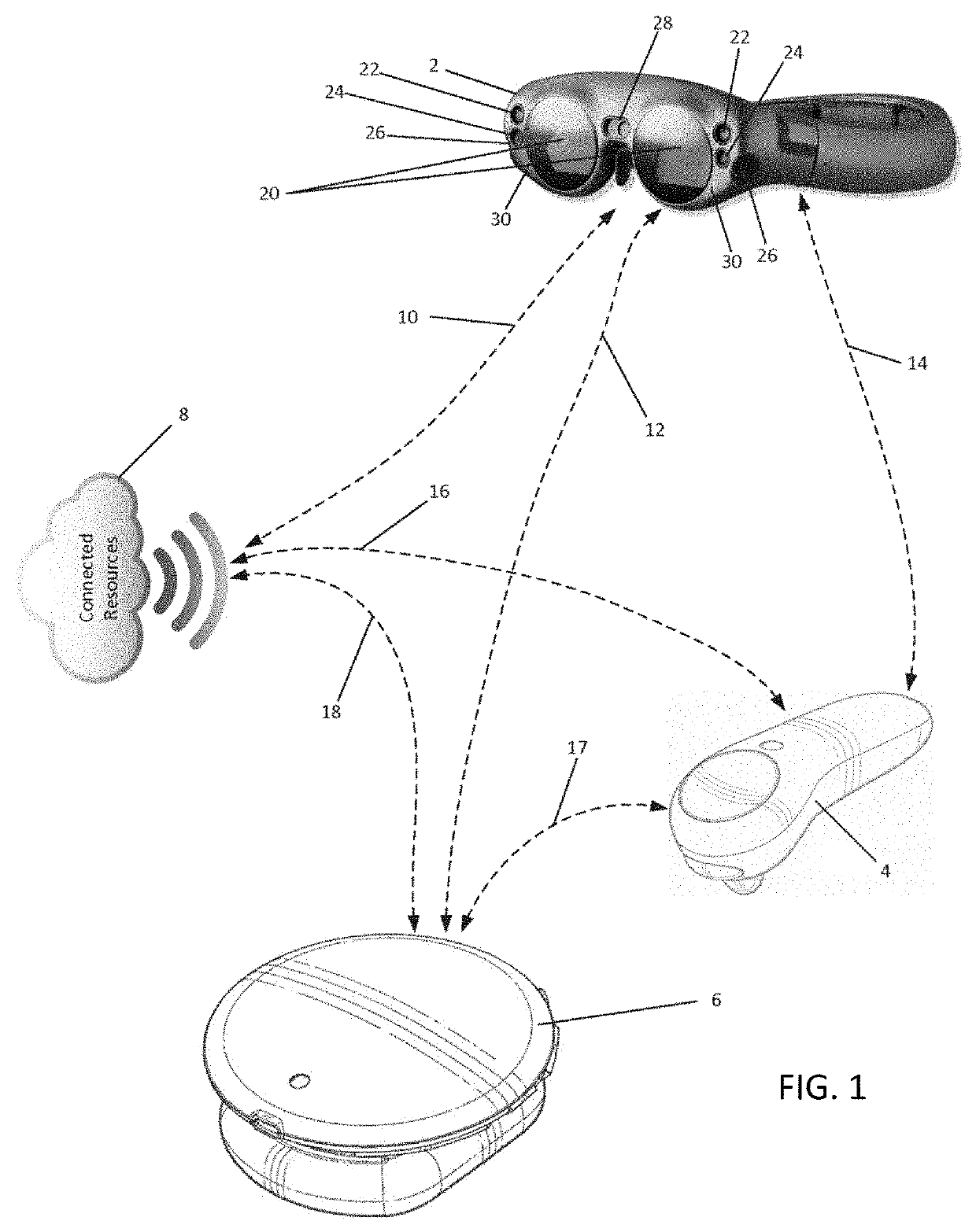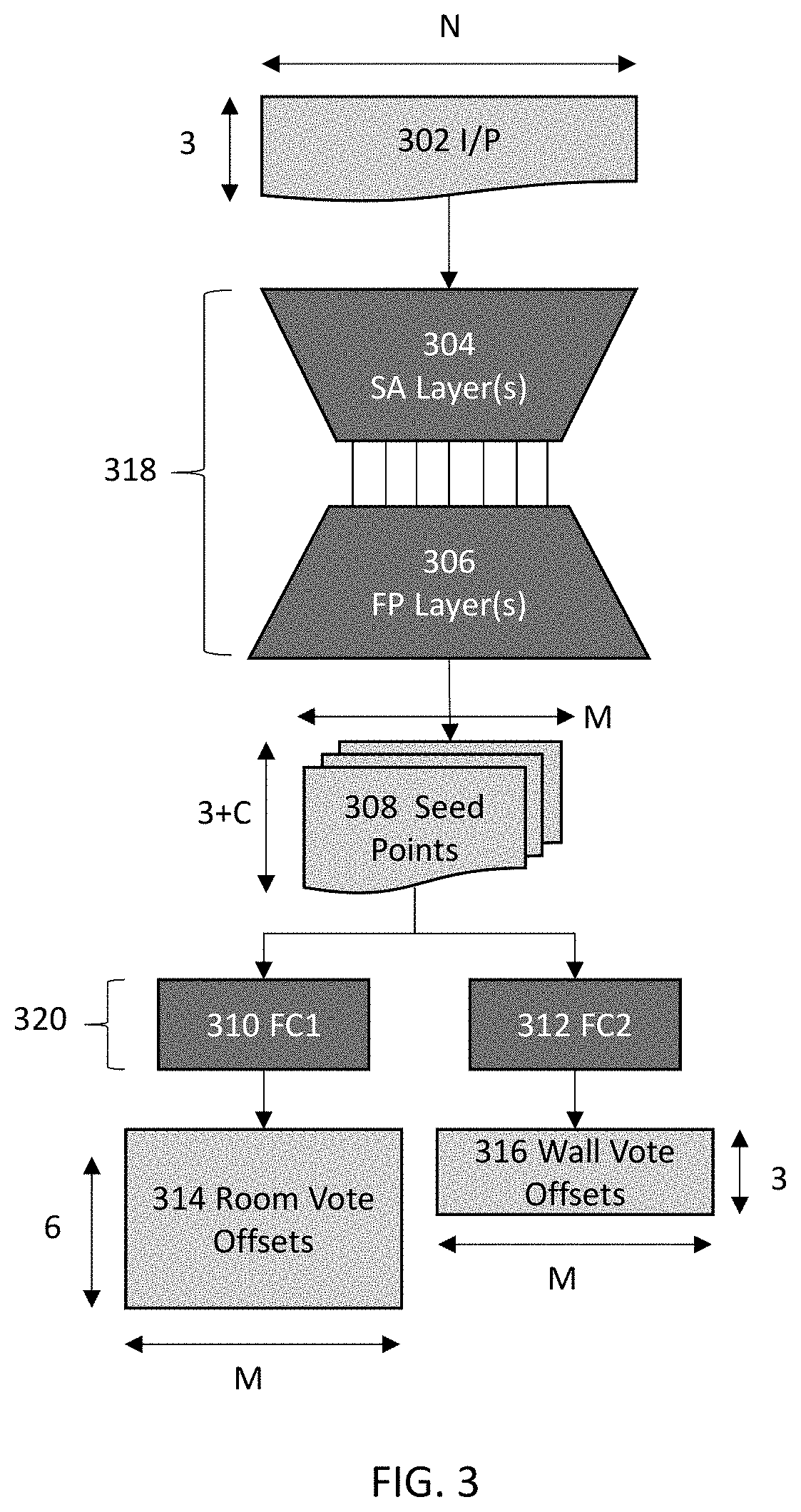Systems and methods for efficient floorplan generation from 3D scans of indoor scenes
a technology of 3d scans and floorplans, applied in image generation, image enhancement, instruments, etc., can solve the problems of local noise, scene clutter and occlusion, and none of these methods could directly apply to non-box-shaped room layout topology,
- Summary
- Abstract
- Description
- Claims
- Application Information
AI Technical Summary
Benefits of technology
Problems solved by technology
Method used
Image
Examples
example implementation
[0185 Details:
[0186]Some embodiments set the number of points input to the network as N=16384 for training and evaluation by randomly subsampling the original point cloud. For the PointNet backbone in the voting module, some embodiments use the same architecture as in. Because some embodiments normalize all the input points to lie in a 2×2 m box, some embodiments set the radii of the four set abstraction layers to [0.2,0.4,0.8,1.2] respectively to enable computation of features at all possible scales. The number of feature channels is set to C=256 for every seed point, and the number of seed points to be created are M=1024. The first vote generator(for rooms) in FIG. 3 has layers with output of sizes of [256,256,6], whereas the second hidden layers (for walls) have layers with output sizes of [256,256,3].
[0187]For the DBSCAN clustering step, some embodiments set the value of ∈=5 cm for room votes and ∈=2.5 cm for wall votes. ∈ is in some sense a measure of the maximum distance betwe...
PUM
 Login to View More
Login to View More Abstract
Description
Claims
Application Information
 Login to View More
Login to View More - R&D
- Intellectual Property
- Life Sciences
- Materials
- Tech Scout
- Unparalleled Data Quality
- Higher Quality Content
- 60% Fewer Hallucinations
Browse by: Latest US Patents, China's latest patents, Technical Efficacy Thesaurus, Application Domain, Technology Topic, Popular Technical Reports.
© 2025 PatSnap. All rights reserved.Legal|Privacy policy|Modern Slavery Act Transparency Statement|Sitemap|About US| Contact US: help@patsnap.com



